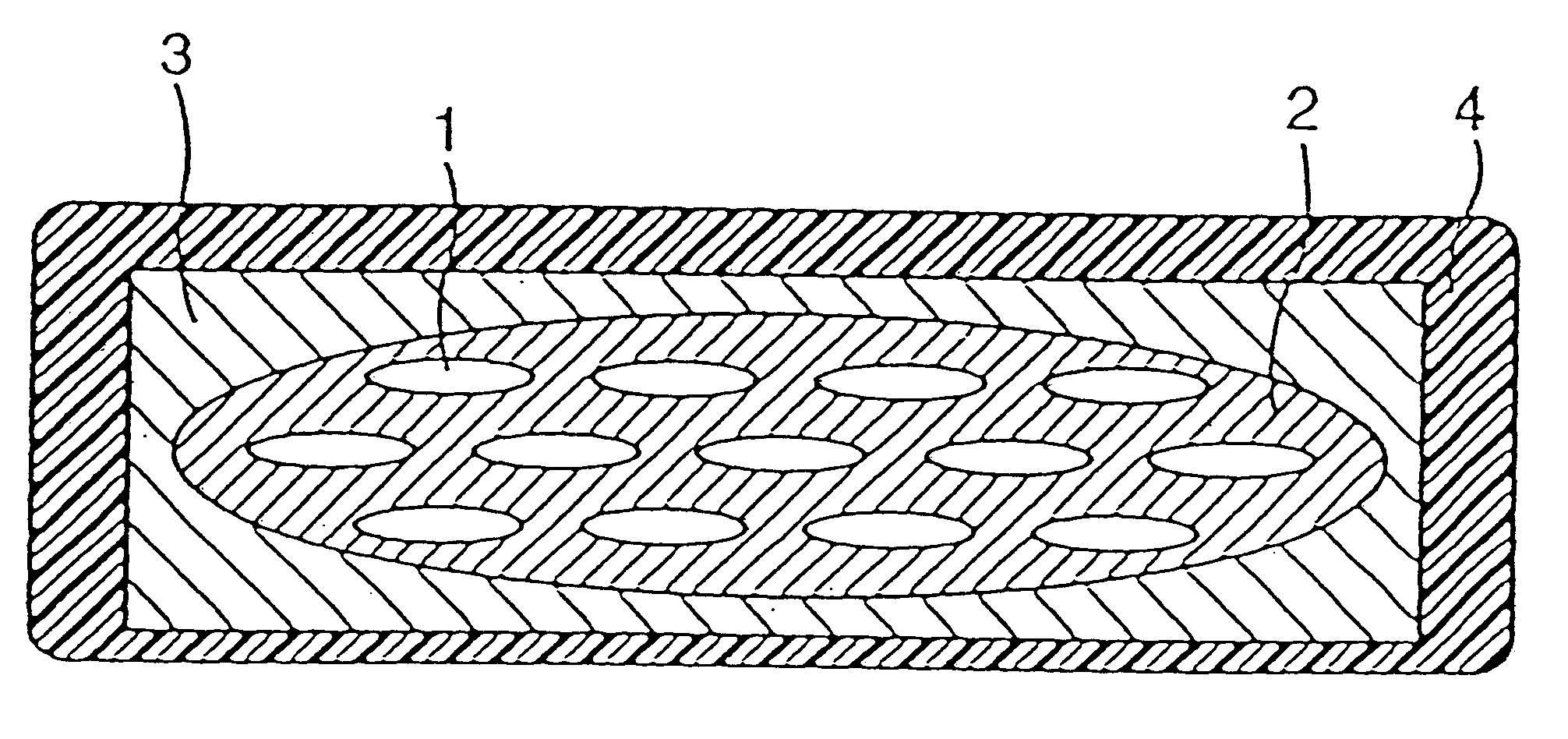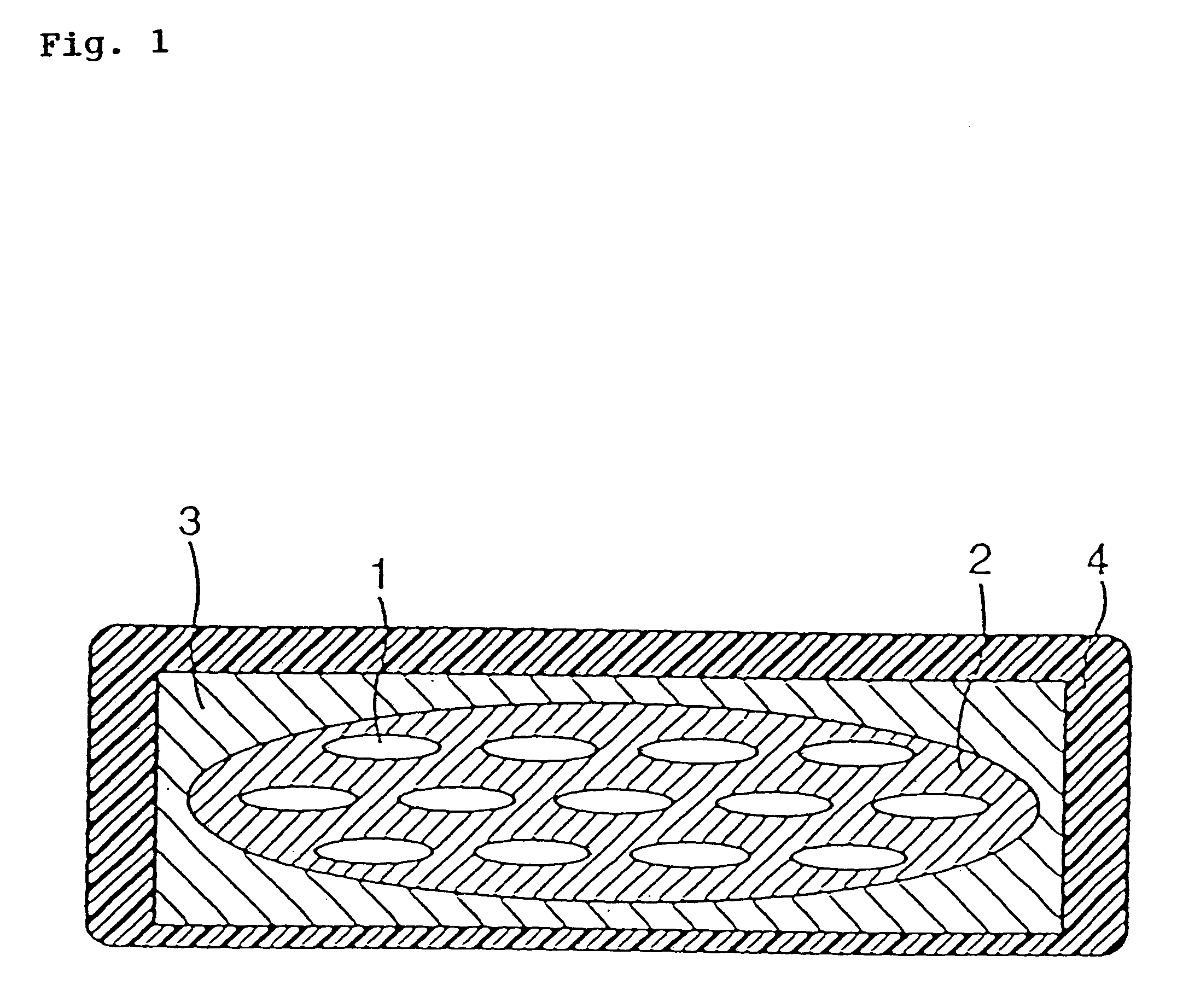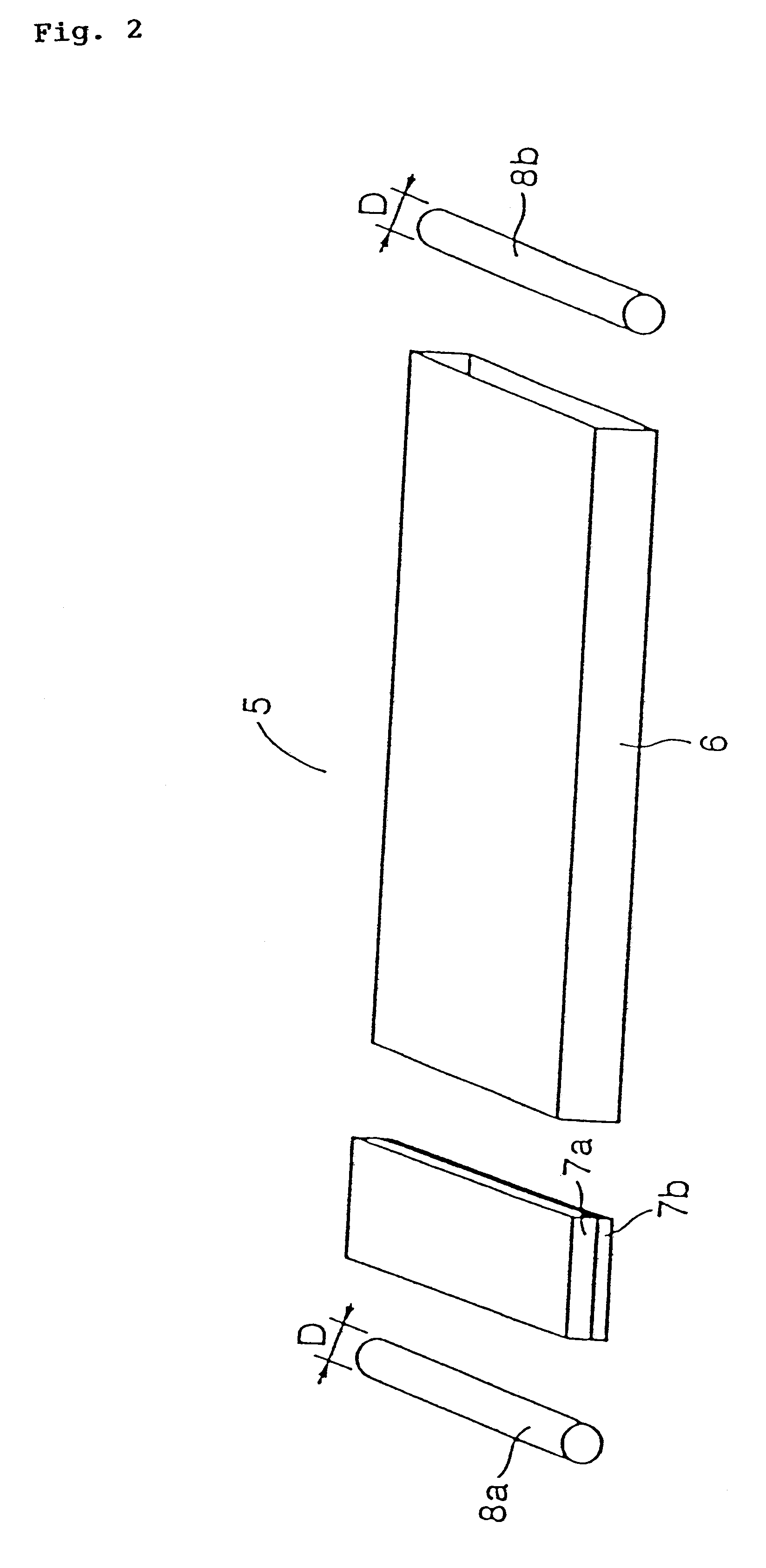Oxide superconducting wire having insulating coat and production method thereof
a superconducting wire and oxide technology, applied in the direction of superconductors/hyperconductors, transformers/inductance details, electrical apparatus, etc., can solve the problems of insufficient generative reaction of the oxide superconductor, marked deterioration of the superconducting properties of the oxide superconducting wire, etc., to achieve the effect of reliably preventing the deterioration of the superconducting properties and easy coiling operation
- Summary
- Abstract
- Description
- Claims
- Application Information
AI Technical Summary
Benefits of technology
Problems solved by technology
Method used
Image
Examples
example 1
In an example of the present invention, the present inventors produced an oxide superconducting wire, which comprises bismuth-based superconducting filaments 1 (see FIG. 1), a first covering layer 2 made of silver so as to serve as a matrix (See FIG. 1), and a second covering layer 3 made of a silver alloy having a manganese content of 0.5% by weight so as to serve as a covering layer (see FIG. 1), by the production method described in the embodiment of the present invention. The critical current of the oxide superconducting wire was 30 A. The thickness of the superconducting wire was 0.24 mm.
An insulating layer 4 (see FIG. 1) was formed by the insulating layer baking process shown in FIG. 3. More specifically, the insulating layer baking process shown in FIG. 3, in which an insulating-film base applying and a baking were repeated four times, was repeated twice. As a result, the thickness of the insulating layer 4 was 10 .mu.m. In this insulating layer baking process, the tension T ...
example 2
The present inventors produced samples which were different in material and in thickness of the second covering layer 3 serving as a covering layer, as shown in Table 1.
Referring to Table 1, a powder-in-tube method, which has been described in the embodiment of the present invention, was basically used as a production method for oxide superconducting wires of an example of the present invention and of Comparative Examples 1 to 3. More specifically, mixed powder was prepared by mixing Bi.sub.2 O.sub.3, PbO, SrCO.sub.3, CaCO.sub.3, and CuO so that the composition ratio (atomic ratio) of Bi:Pb:Sr:Ca:Cu is 1.8:0.4:2:2:3. The mixed powder was subjected to heat treatment at 700.degree. C. to 850.degree. C. and pulverization several times, thereby yielding powder of precursor. The powder of precursor was filled in a first silver pipe serving as a first pipelike member so as to become a first covering layer 2. Subsequently, the first silver pipe filled with the powder of precursor was narro...
example 3
In a production procedure similar to that of Example 2, samples of oxide superconducting wires, which included second covering layers 3 having different thickness, were produced. The specifications of the samples are basically similar to those of the samples in Example 2 of the present invention (see Table 1) except for the thickness of the second covering layers 3. Measurements were taken of the critical tensile stress that does not decrease the critical current, the critical current density (Jc), and the bulge occurring rate during a sintering process for producing an oxide superconductor of each sample. The results of the measurements are shown in FIG. 7. FIG. 7 is a graph showing the relationship among the thickness of the second covering layer 3, the critical tensile stress, the critical current density, and the bulge occurring rate during a sintering process for producing an oxide superconductor.
FIG. 7 shows that many bulges are produced in the sintering process when the thick...
PUM
| Property | Measurement | Unit |
|---|---|---|
| thickness | aaaaa | aaaaa |
| thickness | aaaaa | aaaaa |
| thickness | aaaaa | aaaaa |
Abstract
Description
Claims
Application Information
 Login to View More
Login to View More - R&D
- Intellectual Property
- Life Sciences
- Materials
- Tech Scout
- Unparalleled Data Quality
- Higher Quality Content
- 60% Fewer Hallucinations
Browse by: Latest US Patents, China's latest patents, Technical Efficacy Thesaurus, Application Domain, Technology Topic, Popular Technical Reports.
© 2025 PatSnap. All rights reserved.Legal|Privacy policy|Modern Slavery Act Transparency Statement|Sitemap|About US| Contact US: help@patsnap.com



